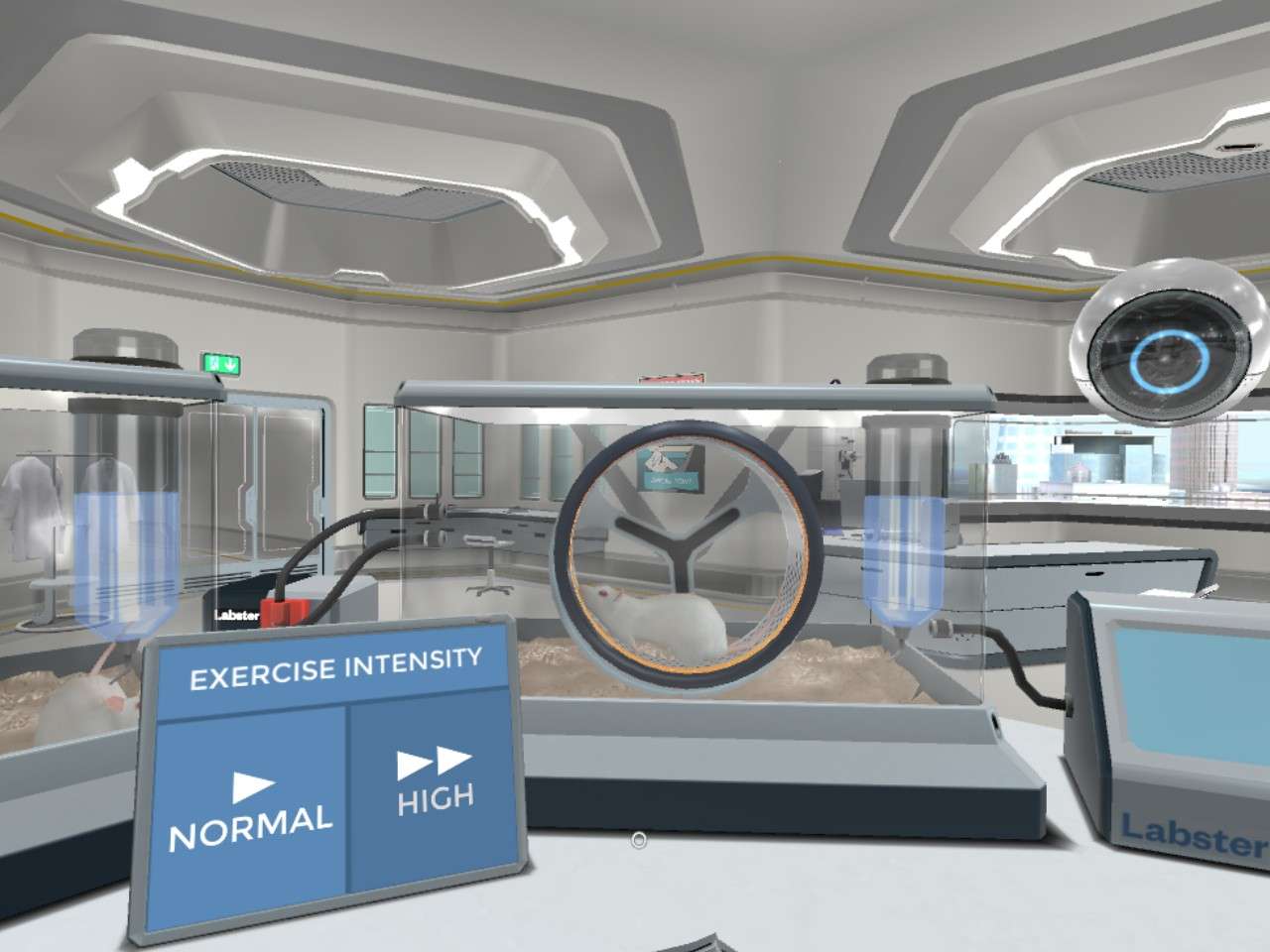Heading 1
Heading 2
Heading 3
Heading 4
Heading 5
Heading 6
Lorem ipsum dolor sit amet, consectetur adipiscing elit, sed do eiusmod tempor incididunt ut labore et dolore magna aliqua. Ut enim ad minim veniam, quis nostrud exercitation ullamco laboris nisi ut aliquip ex ea commodo consequat. Duis aute irure dolor in reprehenderit in voluptate velit esse cillum dolore eu fugiat nulla pariatur.
Block quote
Ordered list
- Item 1
- Item 2
- Item 3
Unordered list
- Item A
- Item B
- Item C
Bold text
Emphasis
Superscript
Subscript
About This Simulation
Take advantage of the recent exciting research findings in the field, and try to develop a potential cure for heart failure. Will you be able to design a virus to help revert heart failure in patients?
Learning Objectives
- Explain the use of gene therapy for the treatment of heart failure
- Explain the causes of heart failure
- Design a viral mediated gene therapy approach
- Define "therapeutic gene"
- Describe the anatomy and function of the heart from a healthy person vs. a heart failure patient
- Produce replication defective recombinant adeno-associated virus (rAAV)
About This Simulation
Lab Techniques
- Electron microscopy
- Co-transfection of mammalian cells
- Viral vector production
Related Standards
- No direct alignment
- No direct alignment
- B.4 Medicine
Learn More About This Simulation
Does using viruses as a form of therapy sound like science fiction to you? This may come as a surprise, but it’s actually a technique on the rise used to deliver functional genes to patients. In the Viral Gene Therapy simulation, you will learn about the use of modified viruses and how to equip them with therapeutic genes. Take advantage of the recent exciting research findings in the field, and try to develop a potential cure for heart failure. Will you be able to design a virus that can help to revert heart failure in patients?
Using viruses to cure heart failure
You will attend a seminar highlighting the causes and symptoms of heart failure, and will have to use gene therapy as a promising way for a treatment based on a particular gene. You will learn the principles behind the concept of gene therapy and pseudovirus production, and apply them to the present study case of heart failure.
Pseudovirus production and testing
You will perform a fitness test with mice to validate a gene as a therapeutic target for gene therapy. Next, they will have to produce the viral capsids containing the therapeutic gene through transfection of the Related plasmids and observe them through an electron microscope. Finally, the efficiency of the produced viruses will be tested on mice again. Since this is a virtual lab, no real animals will be harmed in this experiment, and results are available immediately compared to the expected 5 weeks of incubation.
Test your gene therapy treatment
Once you have designed your gene therapy treatment and produced your viruses containing a therapeutic gene, it will be time to test it on mice affected with heart failure. Will you be able to find a cure for this genetic condition?
For Science Programs Providing a Learning Advantage
Boost STEM Pass Rates
Boost Learning with Fun
75% of students show high engagement and improved grades with Labster
Discover Simulations That Match Your Syllabus
Easily bolster your learning objectives with relevant, interactive content
Place Students in the Shoes of Real Scientists
Practice a lab procedure or visualize theory through narrative-driven scenarios


FAQs
Find answers to frequently asked questions.
Heading 1
Heading 2
Heading 3
Heading 4
Heading 5
Heading 6
Lorem ipsum dolor sit amet, consectetur adipiscing elit, sed do eiusmod tempor incididunt ut labore et dolore magna aliqua. Ut enim ad minim veniam, quis nostrud exercitation ullamco laboris nisi ut aliquip ex ea commodo consequat. Duis aute irure dolor in reprehenderit in voluptate velit esse cillum dolore eu fugiat nulla pariatur.
Block quote
Ordered list
- Item 1
- Item 2
- Item 3
Unordered list
- Item A
- Item B
- Item C
Bold text
Emphasis
Superscript
Subscript
A Labster virtual lab is an interactive, multimedia assignment that students access right from their computers. Many Labster virtual labs prepare students for success in college by introducing foundational knowledge using multimedia visualizations that make it easier to understand complex concepts. Other Labster virtual labs prepare learners for careers in STEM labs by giving them realistic practice on lab techniques and procedures.
Labster’s virtual lab simulations are created by scientists and designed to maximize engagement and interactivity. Unlike watching a video or reading a textbook, Labster virtual labs are interactive. To make progress, students must think critically and solve a real-world problem. We believe that learning by doing makes STEM stick.
Yes, Labster is compatible with all major LMS (Learning Management Systems) including Blackboard, Canvas, D2L, Moodle, and many others. Students can access Labster like any other assignment. If your institution does not choose an LMS integration, students will log into Labster’s Course Manager once they have an account created. Your institution will decide which is the best access method.
Labster is available for purchase by instructors, faculty, and administrators at education institutions. Purchasing our starter package, Labster Explorer, can be done using a credit card if you are located in the USA, Canada, or Mexico. If you are outside of North America or are choosing a higher plan, please speak with a Labster sales representative. Compare plans.
Labster supports a wide range of STEM courses at the high school, college, and university level across fields in biology, chemistry, physics, and health sciences. You can identify topics for your courses by searching our Content Catalog.















